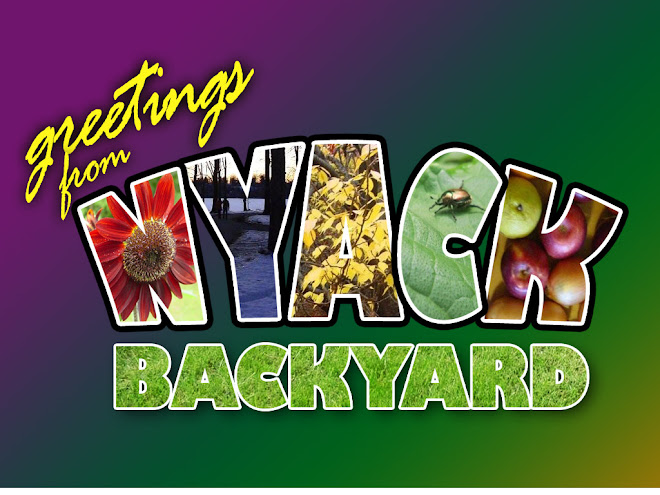 A gift from my dad, this book offers a one hour tutorial on how to identify the 15 most common trees in the US. That might be a little ambitious for a single blog post, so today I'm just focusing on the ones that are not evergreen: Oak, Maple, Ash, Hickory, Aspen, Sweetgum & Elm. Whenever possible, I've included photos of leaves collected from my backyard.
A gift from my dad, this book offers a one hour tutorial on how to identify the 15 most common trees in the US. That might be a little ambitious for a single blog post, so today I'm just focusing on the ones that are not evergreen: Oak, Maple, Ash, Hickory, Aspen, Sweetgum & Elm. Whenever possible, I've included photos of leaves collected from my backyard.
The maple is the most common tree in 16 northeast states, including New York. You might recognize the leaf from the Canadian flag. The 5 veins on this leaf are in a fan shape, branching from a single point:

 These are sweetgum leaves. Sometimes people confuse with the maple because it also has a lobed fan shape. But notice that the lobes of the leaf form more of a star shape.
These are sweetgum leaves. Sometimes people confuse with the maple because it also has a lobed fan shape. But notice that the lobes of the leaf form more of a star shape.
Here's a leaf from a Tupelo tree. Tupelo is also the city in Mississippi where Elvis was born. The tupelo leaf has no teeth -- a smooth edge.
 In contrast with the elm - which has a fishbone pattern and serrated edge.
In contrast with the elm - which has a fishbone pattern and serrated edge.

On an ash tree, the leaflets are closer in size. Notice also that the ash leaf has a smooth edge.
Leaves evolved to contain lobes and leaflets because bigger leaves would rip in the wind, making the tree more susceptible to disease.
More on the evergreens next week!
About.com has an excellent tree finder function.


8 comments:
Hey, thanks! I think what I've been thinking were maples down here are actually sweetgum.
What a cool post... thanks for the info and the book tip!
Out of the 16 most common trees, I could only identify 3! The Maple, Oak and Elm. Thanks for the study guide, I'll keep my eyes open in my travels!
Handy! I can recognize a few trees, but for most of them I have no clue.
What a wonderfully informative post. I have enjoyed reading it very much as I am not well up on my tree identification. Thank you so much and awesome photographs. Thank you also for stopping by my blog.
As a huge tree lover ... thanks for this nifty post ;)
As a huge tree lover ... thanks for this nifty post ;)
This is an excellent post. I once knew them all. It is true if you don't use the knowledge, then it leaves you. Get it--Leaves you;)
Post a Comment